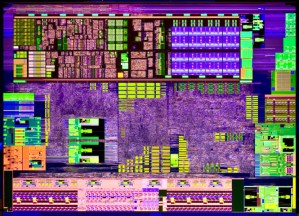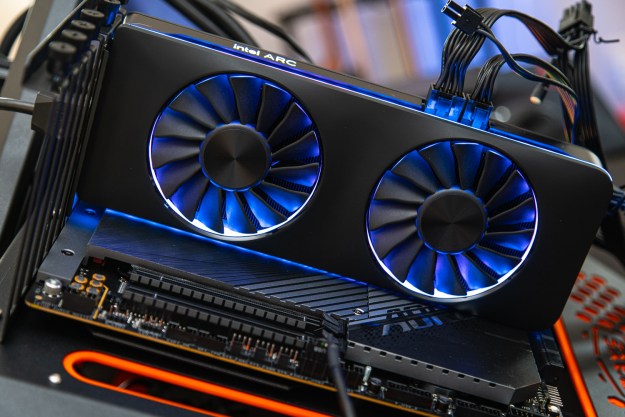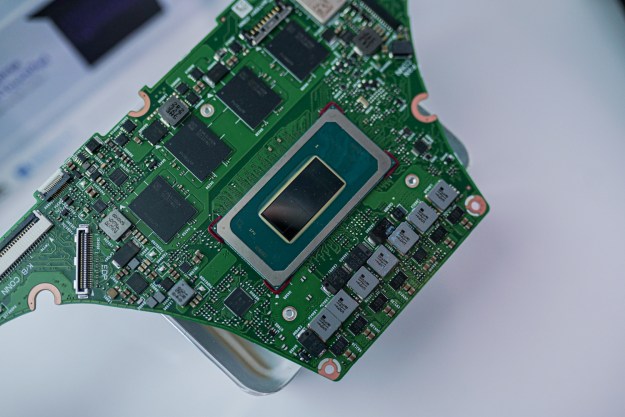
At the Computex trade show this week in Taipei, chipmaking giant Intel has asserted that it wants to be a major player in the tablet computing game, announcing that it plans to deliver “Oak Trail” versions of its Atom procesor that will consume 50 percent less power while still supporting 1080p video playback, making it a fanless, battery-friendly solution for media-centric portable devices…like tablets. One potential downside: Intel doesn’t expect to be shipping Oak Trail system-on-a-chip units until the first quarter of 2011, by which time some industry watchers estimate Apple will already have moved up to 8 million iPads into the world.
Intel’s Oak Trail processors will support a variety of operating systems, including MeeGo (Intel’s own partnership with Nokia), Google’s Android, and full-blown installations of Windows 7. The architecture will also support 1080p playback via HDMI and offer better battery life than the existing “Menlow” platform. Intel hasn’t outlined many other details about Oak Trail’s architecture, save that it plans to have units shipping to OEMs by the first quarter of 2011
Intel also announced that channel partner Acer is expected to be ready to go with the first MeeGo devices. However, Asus will also be the first to ship a pre-installed customized “AppUp” client on netbooks this autumn, dubbed “Aus App Store,” which will let Windows 7 and later MeeGo-based netbooks connect to online application marketplaces.
Intel has been working hard to get its Atom architecture into a variety of product lines, ranging from televisions to automobiles to netbook computers to all-in-one and “nettop” PCs. But Intel has struggled to get a foothold in the mobile world, where most smartphones—and now the iPad—are built around ARM processors. With Oak Trail, Intel hopes to carve out a share of the tablet market for itself and its platform partners…of course, by the time it hits the streets, Apple’s next iteration of the iPad likely won’t be far off.
Editors' Recommendations
- Intel’s next-gen desktop chips may embrace these two major changes
- I want to love Asus’ gaming earbuds, but there are problems
- It’s time to stop ignoring the CPU in your gaming PC
- 4 CPUs you should buy instead of the Intel Core i9-13900K
- No, Intel isn’t blaming motherboard makers for instability issues


